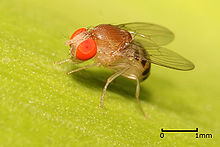
Drosophila is a genus of flies, belonging to the family Drosophilidae, whose members are often called "small fruit flies" or pomace flies, vinegar flies, or wine flies, a reference to the characteristic of many species to linger around overripe or rotting fruit. They should not be confused with the Tephritidae, a related family, which are also called fruit flies ; tephritids feed primarily on unripe or ripe fruit, with many species being regarded as destructive agricultural pests, especially the Mediterranean fruit fly.

The Celastrales are an order of flowering plants found throughout the tropics and subtropics, with only a few species extending far into the temperate regions. The 1200 to 1350 species are in about 100 genera. All but seven of these genera are in the large family Celastraceae. Until recently, the composition of the order and its division into families varied greatly from one author to another.
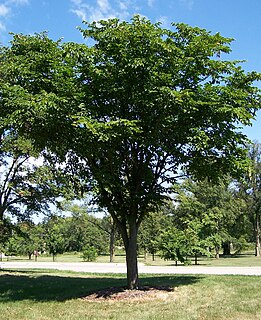
The Ulmaceae are a family of flowering plants that includes the elms, and the zelkovas. Members of the family are widely distributed throughout the north temperate zone, and have a scattered distribution elsewhere except for Australasia.

Hamamelidaceae, commonly referred to as the witch-hazel family, is a family of flowering plants in the order Saxifragales. The clade consists of shrubs and small trees positioned within the woody clade of the core Saxifragales. An earlier system, the Cronquist system, recognized Hamamelidaceae in the Hamamelidales order.
Internal transcribed spacer (ITS) is the spacer DNA situated between the small-subunit ribosomal RNA (rRNA) and large-subunit rRNA genes in the chromosome or the corresponding transcribed region in the polycistronic rRNA precursor transcript.

The Drosophilidae are a diverse, cosmopolitan family of flies, which includes species called fruit flies, although they are more accurately referred to as vinegar or pomace flies. Another distantly related family of flies, Tephritidae, are true fruit flies because they are frugivorous, and include apple maggot flies and many pests. The best known species of the Drosophilidae is Drosophila melanogaster, within the genus Drosophila, also called the "fruit fly." Drosophila melanogaster is used extensively for studies concerning genetics, development, physiology, ecology and behaviour. Many fundamental biological mechanisms were discovered first in D. melanogaster. The fruit fly is mostly composed of post-mitotic cells, has a very short lifespan, and shows gradual aging. As in other species, temperature influences the life history of the animal. Several genes have been identified that can be manipulated to extend the lifespan of these insects. Additionally, Drosophila subobscura, also within the genus Drosophila, has been reputed as a model organism for evolutionary-biological studies, along with D. sechellia for the evolution of host specialization on the toxic noni fruit and Scaptomyza flava for the evolution of herbivory and specialist on toxic mustard leaves.

Diapensiaceae is a small family of flowering plants, which includes 15 species in 6 genera. The genera include Berneuxia Decne., Diapensia L., Galax Sims, Pyxidanthera Michx., Shortia Torr. & A.Gray, and Schizocodon Siebold & Zucc.. Members of this family have little economic importance; however, some members are cultivated by florists.
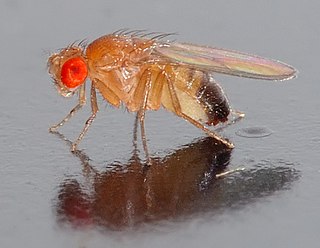
The paraphyletic subgenus Sophophora of the genus Drosophila was first described by Alfred Sturtevant in 1939. It contains the best-known drosophilid species, Drosophila melanogaster. Sophophora translates as carrier (phora) of wisdom (sophos). The subgenus is paraphyletic because the genus Lordiphosa and the species Hirtodrosophila duncani are also placed within this subgenus.
The subgenus Siphlodora belongs to genus Drosophila and consists of two species that share a sigmoid-shaped posterior crossvein. Phylogenetically, the subgenus is positioned within the virilis-repleta radiation.
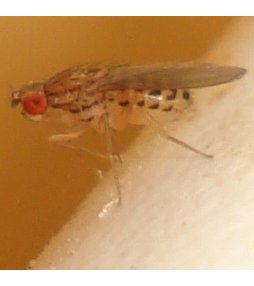
The subgenus Dorsilopha belongs to genus Drosophila and consists of four species. The phylogenetic position of this group has been unclear for a long time, but recent studies have shown that the subgenus is positioned ancestral to the subgenus Drosophila.

The immigrans-tripunctata radiation is a speciose lineage of Drosophila flies, including over 300 species. The immigrans-tripunctata radiation is a sister lineage to most other members of the subgenus Drosophila. A number of species have had their genomes or transcriptomes sequenced for evolutionary studies using Drosophila.
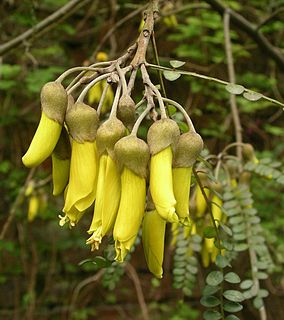
The tribe Sophoreae is one of the subdivisions of the plant family Fabaceae. Traditionally this tribe has been used as a wastebasket taxon to accommodate genera of Faboideae which exhibit actinomorphic, rather than zygomorphic floral symmetry and/or incompletely differentiated petals and free stamens. Various morphological and molecular analyses indicated that Sophoreae as traditionally circumscribed was polyphyletic. This led to a re-circumscription of Sophoreae, which resulted in the transfer of many genera to other tribes. This also necessitated the inclusion of two former tribes, Euchresteae and Thermopsideae, in the new definition of Sophoreae. Tribe Sophoreae, as currently circumscribed, consistently forms a monophyletic clade in molecular phylogenetic analyses. The Sophoreae arose 40.8 ± 2.4 million years ago.

The genus Zaprionus belongs to the family fruit fly Drosophilidae and is positioned within the paraphyletic genus Drosophila. All species are easily recognized by the white longitudinal stripes across the head and thorax. The genus is subdivided in two subgenera, based on the presence of an even or odd number of white stripes. The species of the genus can be found in Africa and Southern Asia. One species, Zaprionus indianus, has invaded the New World.

The Genistoids are one of the major radiations in the plant family Fabaceae. Members of this phylogenetic clade are primarily found in the Southern hemisphere. Some genera are pollinated by birds. The genistoid clade is consistently resolved as monophyletic in molecular phylogenetic analyses. It is estimated to have arisen 56.4 ± 0.2 million years ago. A node-based definition for the genistoids is: "the MRCA of Poecilanthe parviflora and Lupinus argenteus." One morphological synapomorphy has been tentatively identified: production of quinolizidine alkaloids. Some genera also accumulate pyrrolizidine. A new genus, to be segregated from Clathrotropis, has also been proposed to occupy an undetermined position within the genistoid clade.

Scaptomyza flava is an herbivorous leaf mining fly species in the family Drosophilidae. In Latin, flava means golden or yellow. The fly is amber to dark brown in color and approximately 2.5 mm in length. In Europe and New Zealand the larvae are pests of plants in the order Brassicales, including arugula, brassicas, broccoli, Brussels sprouts, bok choy, cabbage, canola, cauliflower, horseradish, kale, kohlrabi, napa cabbage, nasturtium, radish, rapini, rutabaga, turnip, wasabi and watercress. In New Zealand, its range has expanded to include host species that are intercropped with salad brassicas, including gypsophila, otherwise known as baby's breath, which is in the pink family (Caryophyllaceae) and the pea in the Fabaceae. More typically, S. flava is oligophagous within the Brassicales. Scaptomyza are unusual within the Drospophilidae because the group includes species that are truly herbivorous. Other herbivorous drosophilids include D. suzukii, which attacks fruit very early during ripening and species within the genus Lordiphosa, from Africa and Asia, which also include leaf miners. Most drosophilids feed on microbes associated with decaying vegetation and sap fluxes.
The Drosophila saltans species group contains 21 described fly species, all of which are found in the neotropical region. It is one of the seven species groups in the subgenus Sophophora, the others being the D. willistoni, D. melanogaster, D. obscura, D. dispar, D. fima, and D. dentissima groups. The D. saltans species group is most closely related to the D. willistoni subgroup. The species are placed into five subgroups: the D. s. cordata, D. s. elliptica, D. s. parasaltans, D. s. saltans, and D. s. sturtevanti subgroups. It is thought that, like the D. willistoni species group, the D. saltans species group originated in tropical North America, colonized South America, and then diversified prior to the formation of the Isthmus of Panama. Some of these may have migrated back to North America within the last 4.5 million years ago (mya), and consequently the relationship between the species is unresolved due to the short amount of time that has elapsed since their divergence points.

Chymomyza is a genus of vinegar flies.

Scaptomyza is a genus of vinegar flies, insects in the family Drosophilidae. As of 2022, there are 273 described species of Scaptomyza. Of those, 148 are endemic to the Hawaiian archipelago. This genus is part of the species-rich lineage of Hawaiian Drosophilidae, and is the sister lineage to the endemic Hawaiian Drosophila. The genus Scaptomyza is one of several nested within the paraphyletic genus Drosophila.
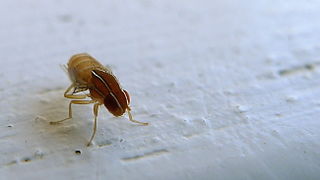
Zaprionus tuberculatus is a member of the subgenus and genus Zaprionus, family Drosophilidae, and order Diptera. It is an invasive fruit fly that originated in Africa, but can also be found in Europe and Asia. The fly earned its common name, the "vinegar fly", because researchers frequently captured the species using vinegar traps. Z. tuberculatus was previously considered a strictly tropical fly, but evidence of invasion to nontropical regions such as Turkey has been shown.
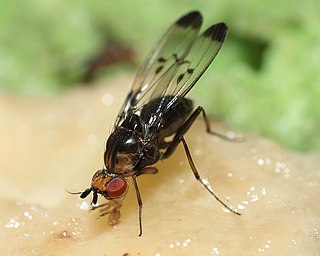
The Hawaiian Drosophilidae are a lineage of flies within the genus Drosophila. This monophyletic clade includes all of the endemic Hawaiian Drosophila and all members of the genus Scaptomyza, which contains both Hawaiian and non-Hawaiian species. The Hawaiian Drosophilidae are descended from a common ancestor estimated to have lived 25 million years ago. Species of Hawaiian Drosophilidae flies have been studied as models of speciation and behavioral evolution. Along with other members of the native Hawaiian ecosystem, the conservations status of many species of Hawaiian Drosophilidae is threatened by habitat loss and introduced predators, among other factors.
